Church Of MO – Bike Review: Polini 910 Carena

Whoever said size matters clearly doesn’t know what they are talking about. At least when it comes to motorcycles. The case in point is this Polini 910 Carena, the subject of this week’s Church of MO feature. Still in existence today, Polini is an Italian company making miniature sportbikes — commonly referred to as pocketbikes — that even Napoleon would feel cramped on. Although, despite their ergonomic challenges, people of all shapes and sizes have gravitated to these pocketbikes. Maybe it’s a raging curiosity rather than a burning desire that compels grown humans to contort themselves to ride such things, but in 1999 the old MO staff did exactly that. Read on to see what we thought.
Bike Review: Polini 910 Carena
By Motorcycle Online Staff Mar. 19, 1999
Los Angeles, May 13, 1999 — Motorcycle racing, like so many other professional sports, has always been just out of reach for most people to consider themselves active participants. In order to solve this dilemma many of the world’s premiere motorcycle racing organizations have developed classes that would, in theory, promote cheap racing. Unfortunately, in practice, they do not. Most of the expenses involved with the
You might probably end up with a Polini. What is a Polini, you ask? Polini-Motori is an Italian company that produces very small or “pocket” motorcycles and performance parts for scooters. In fact they produce one of the most popular pocket bike lines, the Dreambike 910 Series.By making the bikes super small and relatively reasonably priced, Polini offers a formula for affordable racing fun.
Basically, pocket bikes, also known as minimotos, are not mini-bikes in the traditional sense. They are miniature GP racing motorcycles, accurate in proportion to GP bikes and include many of the same component materials such as disc brakes, alloy and billet aluminum cast perimeter frame and swingarm. They are so small they many be perfect as a decoration piece. However, pocket bikes are manufactured to be ridden.
Our test bike, the 910 Carena, represented the middle ground of the Polini pocket bike line-up. The air-cooled, single-cylinder, two-stroke motor only produces a little over six horsepower, but there is a lot of potential in this pocket bike. Bear with us as we try to explain to you what its like to ride this Italian micro-bike less than a foot off the ground at speeds up to 40 miles-per-hour.
Upon removing the Carena from its box, we were required to install the footpegs and tighten the clip-ons to the forks. After that we had to cook up some two-cycle engine food and feed it into the empty tank. We took a last look over the bike and, seeing no potential for trouble, we pulled the starter cord. Although the manual said you only have to pull gently, we had to give it relatively hefty pull but before being rewarded with the distinctive sound of a two-stroke engine waiting to be driven.
Needless to say, as on any other motorcycle, weight distribution and throttle control are key to mastering this bike. The throttle is extremely sensitive, and by moving your weight around you can determine what kind of bike you ride, from safe and stable to a flickable monster. The adjustable centrifugal clutch engages at about half-throttle and if you’re not careful, you will find your butt on the asphalt (or so we’ve heard). As you pick up speed, you realize how nice it would be to have at least some suspension, because the Carena doesn’t have any.
When a turn comes up, throttle back and squeeze the front and rear disk brakes. Much like the throttle, the brakes are extremely sensitive. However, they were well modulated, not grabby. Next, spot your line and begin to countersteer. At this point you notice how suspension can greatly affect the handling of the bike. The bike is beginning to wallow and you’re madly trying to readjust your line in hopes of lessening the turbulence. Unfortunately, that only makes it worse. The correct procedure is to ride it out with a liberal dose of throttle. The little Polini bike can take a fierce beating. Throttling out of the corner, the front wheel lightens up and you do a cool, leaned-over-with-the-front-wheel-half-cocked wheelie. By the time the front wheel touches down, you’re again hurtling along at 40 miles per hour, ready to begin the process one more time.
Since you are so low to the ground, spills generally involve road rash, but be careful, 40 miles per hour is still 40 miles per hour, and contact with the pavement will hurt. Also remember to wear your helmet. We’re not trying to be namby-pamby but your head, at just about any speed, bouncing against the asphalt is gonna hurt. Besides, this is a micro-sized performance bike, not a wind-through-your-hair cruiser.
Fun? It sure is, and the 910 Carena is just Polini’s mid-range pocket bike. The full race version, the 910 Steel, has a nine horsepower liquid-cooled motor, a trellis frame and dual front disk brakes. However, that should not stop you from considering the Carena because, like other 910 series bikes, it can be easily upgraded. In fact Polini makes big-bore kits that can raise the displacement to something on the order of 50cc’s. Combine that with slightly taller gearing and some 910’s have been clocked at 75 miles-per-hour.
The front brake is generally pretty good, but it is also susceptible to fade. Also, the included owner’s manual is not impressive. The text is translated directly from Italian, making it very difficult to read. We had a few other niggles: The welds that attach the clip-ons to the mounting hardware don’t invoke much confidence and our test bike doesn’t like to hold a smooth idle speed. Instead, it revs high enough to spin the wheel rather rapidly with the bike still on the included stand. This is probably just a simple carburetor adjustment problem rather than a problem with the bike. However, our bike would routinely dribble out a black, oily liquid from the tail pipe. Nevertheless, our little bike hauled sufficiently enough not to warrant a carburetor adjustment. Another problem we had was a leaking head gasket, although this may have been attributed to our over-exuberant riding styles more than anything else.
Overall, the Carena is a fine product. Everything fit and worked great. The styling is nice, sparking daydreams of riding a factory bike to victory in GP racing. The stock tires offer enough grip for all of our testers. For some the 910 will be a fun toy to play with at the local parking lot. For others it will be used as a tool for racetrack domination in new pocket bike racing classes. Either way you look at it, competitive pocket bike racing may be the closest thing to full-size GP motorcycle racing that most of us have available.
Leagues and classes are in the process of being formed in America, while the Europeans (Brits and Italians mainly) have already embraced pocket bike racing as a legitimate sport. In fact many top European riders have at one time raced pocket bikes. The Polini 910 Carena starts at $1304.21 USD. If you are interested you may contact East Coast Mini-Moto at (732) 542-5116 or check out their web site at http://www.polini.com/en/page_72.html for more information in regards to pocket bikes or pocket bike racing.
Specifications
Manufacturer: Polini-Motori Model: 910 Carena Price: 04.21 (USD) Engine: air cooled, single cylinder two-stroke (liquid-cooled available)Compression ratio: 16.2:1 Bore and Stroke: 36 x 39 mm Intake: reed valve in the crankcaseClutch: dry with centrifugal counter weightsDisplacement: 40cc Frame: alloy die-cast frame with double diagonal barHorsepower: 4.2 and 6.2 hp at the crankCarburetion: single Del 'Orto SHA 14 - 14 Starting: pull start with self winding cableIgnition: ElectronicFuel capacity: 1.8 Liters (0.48 US gal)Front Tire: 90/80 - 5Rear Tire: 90/80 - 5Brakes: Single disc 122 mm (4.81 in), front and rear Overall Length: 965 mm (38.02 in)Overall Width: 250 mm (9.85 in)Seat Height: 380 mm (14.97 in) Colors: Red, White, Plum, Black, and Polini racing team colorsAvailable with bigger wheels for 6.2 hp model.

Troy's been riding motorcycles and writing about them since 2006, getting his start at Rider Magazine. From there, he moved to Sport Rider Magazine before finally landing at Motorcycle.com in 2011. A lifelong gearhead who didn't fully immerse himself in motorcycles until his teenage years, Troy's interests have always been in technology, performance, and going fast. Naturally, racing was the perfect avenue to combine all three. Troy has been racing nearly as long as he's been riding and has competed at the AMA national level. He's also won multiple club races throughout the country, culminating in a Utah Sport Bike Association championship in 2011. He has been invited as a guest instructor for the Yamaha Champions Riding School, and when he's not out riding, he's either wrenching on bikes or watching MotoGP.
More by Troy Siahaan



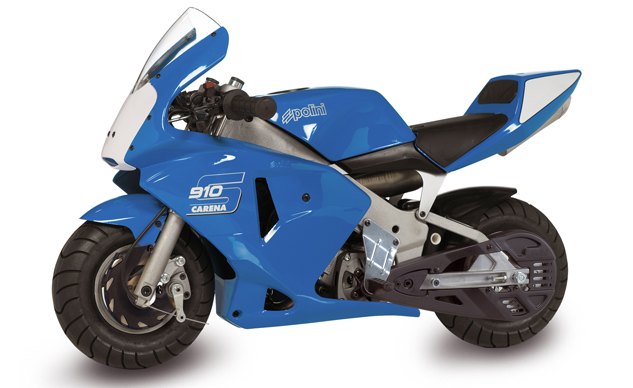
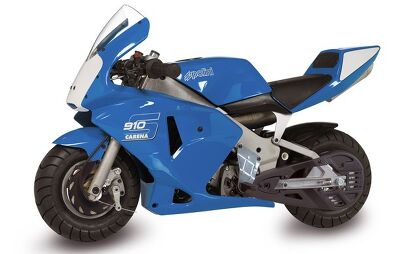


















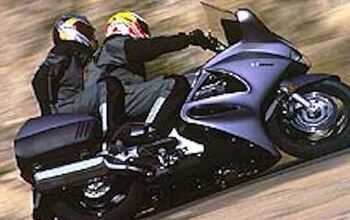
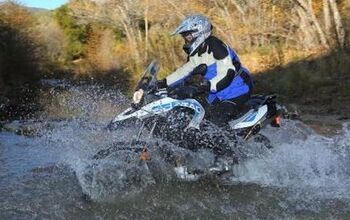


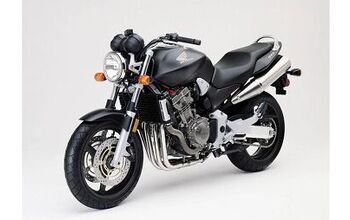











Comments
Join the conversation